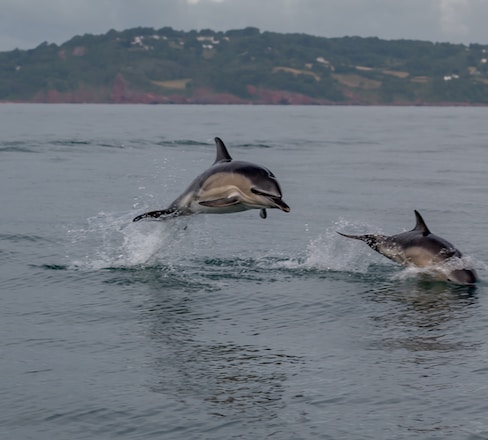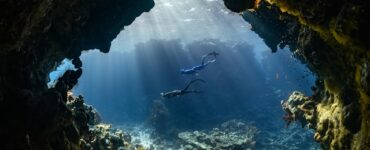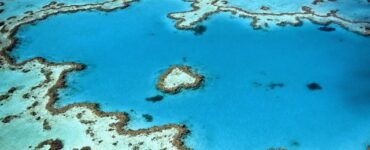Marine mammals including dolphins whales and seals are captivating creatures that inhabit the vast oceans of our planet. In this article we will delve into the fascinating world of marine mammals exploring their behavior the challenges they face and the conservation efforts aimed at protecting these magnificent beings.
The Diversity of Marine Mammals
Marine mammals represent a diverse group of animals that have adapted to life in the marine environment. They exhibit a remarkable range of sizes behaviors and habitats. Let’s take a closer look at some of the most iconic marine mammal species:
Dolphins: Intelligent and Playful Swimmers
Dolphins are known for their intelligence agility and playful nature. These highly social creatures inhabit coastal waters and oceans worldwide. They are known for their acrobatic displays stunning leaps and the ability to communicate through a complex system of clicks whistles and body language. Dolphins are known to exhibit sophisticated social structures and have been observed engaging in cooperative hunting and caring for their young.
Whales: Majestic Giants of the Ocean
Whales the largest animals on Earth evoke a sense of awe and wonder. These majestic giants undertake epic migrations across vast distances showcasing their remarkable strength and resilience. Whales are known for their complex vocalizations often referred to as songs which play a crucial role in communication and navigation. These gentle giants including species such as humpback whales and blue whales captivate us with their immense size and grace.
Seals: Adaptable Coastal Dwellers
Seals are well-adapted to both land and water with their streamlined bodies and powerful flippers. These charismatic mammals are often found in coastal regions and polar environments. Seals display remarkable agility in the water using their flippers to swim with ease. On land they form colonies and engage in behaviors such as basking in the sun and nurturing their young. Seals play a vital role in maintaining the balance of marine ecosystems serving as both predator and prey.
Behaviors and Adaptations
Marine mammals have evolved a range of behaviors and adaptations that enable them to thrive in their aquatic habitats. Here are some notable characteristics:
Echolocation: The Power of Sound
Many marine mammals such as dolphins and whales utilize echolocation to navigate and locate prey. They emit high-frequency clicks or vocalizations and interpret the echoes that bounce back allowing them to create a detailed auditory map of their surroundings. This remarkable adaptation helps them navigate in dark or murky waters and locate food sources with precision.
Social Structures and Communication
Marine mammals exhibit complex social structures and communication systems. They rely on vocalizations body language and tactile interactions to communicate within their groups. These sophisticated communication abilities play a crucial role in coordinating activities such as hunting migration and breeding. The bonds formed within these social groups are vital for the survival and well-being of marine mammals.
Diving and Adaptations to Pressure
Marine mammals have remarkable adaptations that allow them to dive to great depths and withstand the pressures of the underwater world. Their bodies are equipped with specialized lungs and blood circulation systems that enable efficient oxygen storage and utilization. Some species such as sperm whales are known to dive to incredible depths in search of prey while others like seals have the ability to remain submerged for extended periods.
Conservation Efforts
Marine mammals face numerous threats that jeopardize their survival and well-being. Conservation efforts are vital for protecting these incredible creatures and ensuring the health of our oceans. Let’s explore some of the key conservation initiatives:
Mitigating Human Impacts
Human activities such as pollution habitat destruction overfishing and vessel strikes pose significant threats to marine mammals. Conservation efforts focus on minimizing these impacts through measures such as regulating fishing practices reducing plastic pollution establishing protected areas and implementing guidelines for responsible wildlife tourism.
Research and Monitoring
To effectively conserve marine mammals continuous research and monitoring are essential. Scientists study their behavior migration patterns reproductive biology and overall population health to better understand their needs and develop targeted conservation strategies. Cutting-edge technologies such as satellite tracking and acoustic monitoring provide valuable insights into the lives of these creatures.
International Cooperation and Policy
Conservation of marine mammals requires international cooperation and the implementation of robust policies. Organizations governments and stakeholders collaborate to establish agreements regulations and frameworks that promote the conservation and sustainable management of marine mammal populations. Examples include the International Whaling Commission (IWC) and the Convention on the Conservation of Migratory Species of Wild Animals (CMS).
Explore the Wonders of Marine Mammals
The world of marine mammals is a captivating realm of intelligence beauty and interconnectedness. By understanding their behaviors appreciating their importance and actively supporting conservation efforts we can contribute to the preservation of these remarkable creatures and the fragile ecosystems they call home.

Hi, I’m Jodie! I’m a spain-Moroccan writer with a passion for imagination, adventures, magic and stories with heart.
Please don’t hesitate to contact me for any questions, suggestions, comments or feedback.

















Add comment